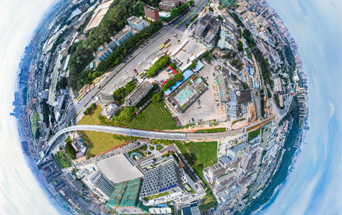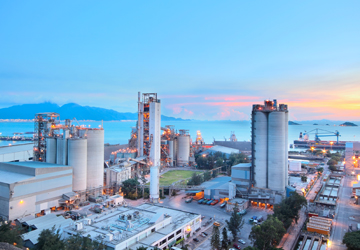According to foreign media reports, Brazil surpassed the mark of 10 GW (gigawatts) of installed power in solar energy, reaching the fourteenth position among the countries with the greatest capacity for this source. The volume represents more than 70% of the installed capacity of the Itaipu hydroelectric plant, the second largest in the world.
The solar source occupies the fifth place in the Brazilian electrical matrix, above thermal plants powered by oil and other fossils, which have 9.1 GW of power. According to Brazilian Association of Photovoltaic Solar Energy (Absolar), the brand is the result of investments in excess of R$ 52.7 billion since 2012 and the market's expectation is that contributions continue to rise after the approval of the new framework for distributed generation.
The framework guarantees current projects, or those filed within 12 months after the publication of the law, discounts on the use of energy distribution network tariffs until 2045. Brazilian Association of Distributed Generation (ABGD) estimates that the project could encourage the installation of another 10 GW in two years.
With the growth in installed capacity, solar energy generation registered two generation records in July. One of them, of instantaneous generation, was beaten at 12:14 on the 19th, with a peak of 2,211 MW. The other was of average generation in one day, with 682 average MW on the 30th. In the centralized generation segment, Brazil has 3.5 GW of installed power in solar plants, equivalent to 1.9% of the country's electricity matrix. In four auctions carried out by the government in 2019 and 2021, the solar source was the most competitive, featuring the lowest prices. In the self-generation segment, there are 6.5 GW of installed power. This model ranges from panels installed on the roofs of homes or commercial and industrial buildings to solar farms built on demand by private customers.
"Thanks to the versatility and agility of solar technology, it only takes one day of installation to transform a home or business into a small plant that generates clean, renewable and accessible electricity", says the president of Absolar, Rodrigo Sauaia. "On the other hand, for a large-scale solar plant, it takes less than 18 months from the auction to the start of electricity generation. Thus, solar is recognized as a champion in the speed of new generation plants."
Institute for Consumer Protection (Idec) claims, however, that the current model of incentives puts a greater portion of the cost of operating the distribution networks on the backs of the poorest consumer, since there is a discount for those who are able to invest in solar energy. Agência Nacional de Energia Elétrica (Aneel) itself even estimated this impact in the range of around R$ 3 billion per year.
The sector defends that the incentives guarantee the growth of a clean energy source and less demanding of investments in transmission lines, since it can be installed close to the big consuming centers. "Large solar plants generate electricity at prices up to ten times lower than emergency fossil thermoelectric plants or electricity imported from neighboring countries today, two of the main factors responsible for the tariff increase on consumers," says Sauaia.
"The evolution to a 100% clean and renewable electrical matrix is possible and depends more on will and political leadership than on technical and economic conditions, with more government incentives both in its own generation and in the planning and expansion of large centralized plants", defends the chairman of the board of directors of Absolar, Ronaldo Koloszuk.















 Facebook
Facebook
 Twitter
Twitter
 Google+
Google+
 LinkedIn
LinkedIn
 Prev
Prev








